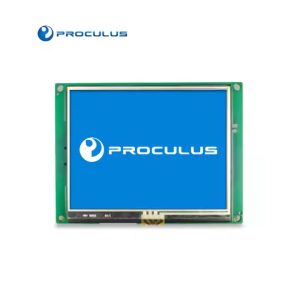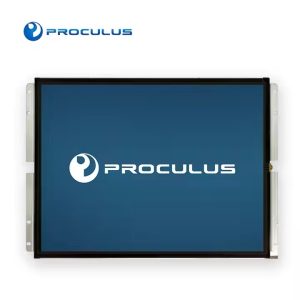The Characteristics of Liquid Crystals in LCD Screens
Many people know what the characteristics of TFT LCD screens are, but do you know what are the characteristics of TFT LCD screen material? Today, we will tell you about the knowledge of the characteristics of Liquid Crystals in LCD Screens.
With rapid advances in TFT LCD technology, these displays have moved beyond high-end devices like notebooks and entered the desktop market, thanks to improved manufacturing and reduced costs. By directly driving liquid crystal molecules, TFT arrays eliminate cross-distortion and allow for higher information density. The use of low-viscosity liquid crystals significantly increases response speed, making these displays suitable for video playback. Compared to TN and STN types, TFT LCDs represent a major leap in performance, positioning them as one of the most promising display technologies of the 21st century.LCD Liquid Crystal Display
The LCD screen is well-known because, since its creation, its model has served as the basis for various displays, including derivative ones.
Most screens follow the LCD structure, which essentially means a liquid crystal display.
The majority of screens are based on an LCD screen, which consists of glass substrates, an RGB color filter, a backlight, electrodes, and polarizers.
The structure of an LCD display is basically formed, first, by the backlight, which passes through polarizers, substrates, and electrodes that activate the liquid crystal, then reaches the color filter, and finally another polarizer.
Each type of screen may have some variation in this structure but remains LCD-based.
This is the case, for example, with LED screens, whose main difference is their LED backlight.
Thus, in conclusion, the LCD display became popular because it spread throughout the entire screen industry since its creation.
As a result, there is extensive research that facilitates its improvement through additional technologies, which is what is happening today.
The characteristics of Liquid Crystals in LCD Screens:
TFT also adopts the principle of TN type electro-optic effect, but the TFT LCD material is different from the traditional liquid crystal material. In addition to good physical and chemical stability and a wide operating temperature range, the materials of the TFT LCD module must also have the following characteristics:
(1) Low viscosity, the viscosity should be less than 35 mPa 8226/s at 20℃ to meet the needs of fast response.
(2) Low threshold voltage (Vth) to achieve low voltage drive and reduce power consumption.
(3) High voltage holding ratio (V.H.R), that is, LCD materials must have high resistivity, generally requiring at least greater than 1012Ω826cm.
(4) The optical anisotropy (Δn) is matched to the TFT to eliminate the rainbow effect for greater contrast and wide-angle field of view. The range of △n value should be between 0.07~0.11.
Currently, TN-type TFT LCD screens are in decline, with shrinking demand, excess production, and intense price competition. They no longer offer investment value. STN-type LCDs are reaching maturity, with steady demand and well-established production techniques. Meanwhile, TFT-type LCDs are entering a phase of rapid growth. Market demand is rising sharply, driven by performance and efficiency. This positions TFT LCDs as one of the most promising display technologies of the 21st century.
Conclusion
Although liquid crystal materials for the wholesale TFT screen whose end groups are cyano groups, such as biphenyl and phenylcyclohexane liquid crystals, have been widely used in TN and STN LCDs, their viscosity is higher than that of fluorine-containing liquid crystals with the same molecular structure. These unfavorable factors limit the application of this type of compounds in TFT LCDs.
Ester-based liquid crystals are easy to synthesize, come in many varieties, and offer a broad phase transition range. However, their high viscosity limits their use in TFT formulations. As a result, developing new liquid crystal compounds with better properties has become a key focus in liquid crystal chemistry.Liquid crystal materials in LCD screens have advanced rapidly alongside device development, evolving through several generations of compounds. They range from biphenyl nitriles and esters to heterocyclic benzenes and pyrimidine-based compounds. Later developments include cyclohexyl benzene, diphenylacetylene, ethyl-bridged, and fluorinated aromatic compounds.
Japan has synthesized difluoroethylene liquid crystals with highly stable molecular structures. These materials continue to meet the demanding performance standards of both STN and TFT LCD technologies.

 English
English


